- Home
- Geraldine Brooks
The Best American Short Stories® 2011
The Best American Short Stories® 2011 Read online
Table of Contents
Title Page
Table of Contents
Copyright
Foreword
Introduction
Ceiling
Housewifely Arts
A Bridge Under Water
Out of Body
Free Fruit for Young Widows
La Vita Nuova
Gurov in Manhattan
The Sleep
Soldier of Fortune
Foster
The Dungeon Master
Peter Torrelli, Falling Apart
Property
Phantoms
Dog Bites
ID
To the Measures Fall
The Call of Blood
Escape from Spiderhead
The Hare's Mask
Contributors' Notes
Other Distinguished Stories of 2010
Editorial Addresses of American and Canadian Magazines Publishing Short Stories
Copyright © 2011 by Houghton Mifflin Harcourt Publishing Company
Introduction copyright © 2011 by Geraldine Brooks
ALL RIGHTS RESERVED
The Best American Series® and The Best American Short Stories® are registered trade-
marks of Houghton Mifflin Harcourt Publishing Company.
No part of this work may be reproduced or transmitted in any form or by any means,
electronic or mechanical, including photocopying and recording, or by any infor-
mation storage or retrieval system without the proper written permission of the
copyright owner unless such copying is expressly permitted by federal copyright
law. With the exception of nonprofit transcription in Braille, Houghton Mifflin
Harcourt is not authorized to grant permission for further uses of copyrighted se-
lections reprinted in this book without the permission of their owners. Permission
must be obtained from the individual copyright owners as identified herein. Ad-
dress requests for permission to make copies of Houghton Mifflin Harcourt mate-
rial to Permissions, Houghton Mifflin Harcourt Publishing Company, 215 Park Av-
enue South, New York 10003.
ISSN 0067-6233
ISBN 978-0-547-24208-8
ISBN 978-0-547-24216-3 (pbk.)
Printed in the United States of America
DOC 10 9 8 7 6 5 4 3 2 1
"Ceiling" by Chimamanda Ngozi Adichie. First published in Granta, no. 111.
Copyright © 2010 by Chimamanda Ngozi Adichie. Reprinted by permission of The
Wylie Agency, LLC.
"Housewifely Arts" by Megan Mayhew Bergman. First published in One Story, no.
142, November 2010. To be published in Birds of a Lesser Paradise, March 2012,
Scribner. Copyright © 2011 by Megan Mayhew Bergman. Reprinted by permission
of the author.
"A Bridge Under Water" by Tom Bissell. First published in Agni, no. 71. Copy-
right © 2010 by Tom Bissell. Reprinted by permission of the author.
"Out of Body" by Jennifer Egan. First published in Tin House, vol. 11, no. 3. From
A Visit from the Goon Squad by Jennifer Egan, copyright © 2010 by Jennifer Egan.
Used by permission of Alfred A. Knopf, a division of Random House, Inc.
"Free Fruit for Young Widows" by Nathan Englander. First published in The New
Yorker, May 17, 2010. Copyright © 2010 by Nathan Englander. Reprinted by permis-
sion of Nathan Englander.
"La Vita Nuova" by Allegra Goodman. First published in The New Yorker, May 3,
2010. Copyright © 2010 by Allegra Goodman. Reprinted by permission of The
Irene Skolnick Agency.
"Gurov in Manhattan" by Ehud Havazelet. First published in TriQuarterly, no.
137, January-December 2009. Copyright © 2010 by Ehud Havazelet. Reprinted by
permission of the author.
"The Sleep" by Caitlin Horrocks. First published in The Atlantic Fiction for Kindle,
July 1, 2010. Copyright © 2010 by Caitlin Horrocks. Reprinted by permission of
Sterling Lord Literistic, Inc. on behalf of Caitlin Horrocks.
"Soldier of Fortune" by Bret Anthony Johnston. First published in Glimmer Train,
no. 77, Winter 2011. Copyright © 2010 by Bret Anthony Johnston. Reprinted by
permission of the author.
"Foster" by Claire Keegan. First published in The New Yorker, February 15 and 22,
2010. Copyright © 2010 by Claire Keegan. Reprinted by permission of the author.
"The Dungeon Master" by Sam Lipsyte. First published in The New Yorker, Octo-
ber 4, 2010. Copyright © 2010 by Sam Lipsyte. Reprinted by permission of Sterling
Lord Literistic, Inc. on behalf of Sam Lipsyte.
"Peter Torrelli, Falling Apart" by Rebecca Makkai. First published in Tin House,
vol. 12, no. 2. Copyright © 2010 by Rebecca Makkai. Reprinted by permission of
Rebecca Makkai.
"Property" by Elizabeth McCracken. First published in Granta, no. 111. Copy-
right © 2010 by Elizabeth McCracken. Reprinted by permission of Dunow, Carlson
& Lerner Literary Agency.
"Phantoms" by Steven Millhauser. First published in McSweeney's, no. 35. Copy-
right © 2010 by Steven Millhauser. Reprinted by permission of International Cre-
ative Management on behalf of Steven Millhauser.
"Dog Bites" by Ricardo Nuila. First published in McSweeney's, no. 36. Copyright ©
2011 by Ricardo Nuila. Reprinted by permission of Ricardo Nuila.
"ID" by Joyce Carol Oates. First published in The New Yorker, March 29, 2010.
Copyright © 2010 by The Ontario Review, Inc. Reprinted by permission of John
Hawkins & Assoc., Inc.
"To the Measures Fall" by Richard Powers. First published in The New Yorker, Oc-
tober 18, 2010. Copyright © 2010 by Richard Powers. Reprinted by permission of
Melanie Jackson Agency, LLC.
"The Call of Blood" by Jess Row. First published in Harvard Review, no. 38. Copy-
right © 2010 by Jess Row. Reprinted by permission of Jess Row.
"Escape from Spiderhead" by George Saunders. First published in The New Yorker,
December 20 and 27, 2010. Copyright © 2010 by George Saunders. Reprinted by
permission of the author.
"The Hare's Mask" by Mark Slouka. First published in Harper's Magazine, January
2011. Copyright © 2011 by Mark Slouka. Reprinted by permission of the author.
Foreword
A FEW YEARS AGO, as documented in a book titled The Average American: The Extraordinary Search for the Nation's Most Ordinary Citizen, Kevin O'Keefe, the author, set out to find the most "perfectly average" person in the nation. This person turned out to be Bob Burns. He was fifty-four years old. He was married, wore glasses. He worked forty hours a week as a maintenance supervisor at Windham Technical High School in Connecticut. This five-foot-eight, 190-pound man drank coffee each morning, read the newspaper each day, walked his dog each evening, and attended church most Sundays.
If I were to attempt to describe a perfectly average American short story, it might sound like this: disaffected child protagonist (I'll call him Wally), in the face of parents' recent divorce, finds solace as well as self-awareness in nonconformist flute teacher (I'll call her Ms. Note). The voice in the story would be quirky but not overly oddball, and the story might be told in the present tense, using a first-person point of view. The setting would be Wally's house and Ms. Not
e's living room—and maybe this living room would double as a dining room and bedroom, and maybe Ms. Note would have recently lost her job as a chef, and maybe Wally's father had several food allergies, which had always secretly irked Wally's mother. The ending would suggest resolution but hint at its opposite. I don't mean this description to sound belittling or quite as reductive as it might. I just mean to demonstrate some of the most common elements that I come across in the many short stories I read each year.
In my five years on this job, I have been lucky to work alongside guest editors with extraordinarily diverse backgrounds and tastes. Still, nearly all of them have been surprised at the enormous number of stories that share at least some facets of Wally's. Most taken aback, I would guess, have been the guest editors whose first home was not the United States. When I began working with the wonderful Geraldine Brooks, she promptly took note of the large number of naturalist stories set in the present time. I felt a bit like I had led her into a sprawling subdivision full of identical houses. "Welcome to American short fiction," I might have said with a slight grimace. "Please don't judge us." Although her task was of course solely to judge us.
I admit that I feel protective of all this domestic, realist fiction. The majority of my own life is spent tending to small children and folding laundry and emptying the dishwasher, that blessed dishwasher that seems to fill thrice daily as if only to spite me. I have grown accustomed to wandering down the streets of the abovementioned subdivision and knocking on the door of a putty-colored house and finding young Wally sprawled across his microfiber sectional texting a friend rather than practicing flute. And nothing is more welcome to me than a whopper sentence—maybe funny or deadpan, maybe horrifically dark—embedded in the first paragraph of such a story. You know where you are—but hold on, the good story promises. I'll yank that plush Pottery Barn rug right out from under your feet.
Young short story writers often start with familiar subject matter and manageable scope. I don't believe this is problematic. Familiar setting or characters or premise certainly does not necessitate familiar writing. Little makes me more uncomfortable than watching a new writer attempt a triple-triple lutz without sufficient control of language or grasp of form. That reading experience sometimes starts like this: second person (okay, that's fine, sort of) on a prewedding trip to Barcelona; florid or jerky language and vast generalizations about gender (now "I" secretly prefer the leggy barista in a café with luminous cleavage to my willowy and controlling grad student fiancée); excessive description of the rain in Spain that overtly reflects "my" inner state (ugh); sudden switch to first or third person (uh-oh); cut to barista naked on top of "me" (and I'm out).
To my mind, at least in terms of content, you've got an advantage if you choose less familiar settings or characters or premises. In some ways, it might be easier to write of a homophobic soldier in Afghanistan the day after Don't Ask, Don't Tell was repealed than to write Wally's story. The news is in the content itself. Welcome your reader to a prefab with central air, granite countertops, and walk-in closets and watch this reader slowly back away from the page. Your work is cut out for you. Of course, challenges do arise by setting a story in a war zone. Be careful with your form and language, which should ideally be indivisible from the subject matter. As always, try to avoid stereotypes or characters who exist only to dramatize your sociopolitical agenda. The homophobic soldier? Maybe she is a cabinetmaker from Vermont. Her effeminate battalion leader—he might have been raised in rural Texas by a gun salesman. Okay, I'm laying it on thick here, but I hope you see what I'm getting at. Dramatic content, diverse setting, and innovative form do not automatically entail good writing.
To be absolutely clear: I do not mean to say that I'm hungry to read thousands more stories about Wally or his warring parents or their neighborhood—or that I prefer this content, really, to any other. In fact I would love to read more stories about war (so terribly widespread these days) and the wide world outside the United States and our impact on the environment. I deeply respect writers who explore new territory and/or take risks with structure or form (see Jennifer Egan, Caitlin Horrocks, Steven Millhauser in the following pages, for starters). But to me, the quality of writing always takes precedence over the author's choice of content or form. I look for immediacy, freshness of language, and, perhaps more than anything, ease of language (see Bret Anthony Johnston, Rebecca Makkai, Ricardo Nuila—really all of the writers whose stories appear between these covers). Jonathan Franzen offers this wise bit of advice to writers: "The reader is a friend, not an adversary, not a spectator." I seek a certain intimacy when I read, a sense that the writer is someone knowable to me, someone I can trust—not a professor, not an acrobat. Certainly not a figure skater twirling like a tornado at the center of a cold, dark rink.
Ms. Brooks was a superb guest editor, eager to include different genres and confident in her excellent taste. As she writes in her introduction, plot has clearly become distasteful to many American short story writers. Interestingly, this series was in part developed to showcase stories that shunned a ubiquitous sort of plot that had "poisoned" much of the writing at the time, nearly one hundred years ago. But I fear that a new normal has evolved in its place, one conspicuously void of momentum and uninterested in maintaining the reader's attention. Happily, each story in this year's edition creates and sustains its own momentum, whether through premise or language, character or even perfectly placed silence. Each writer demonstrates an astonishing understanding of their characters and the worlds in which they live, wherever these worlds may be.
The stories chosen for this anthology were originally published between January 2010 and January 2011. The qualifications for selection are (1) original publication in nationally distributed American or Canadian periodicals; (2) publication in Engtish by writers who are American or Canadian, or who have made the United States their home; (3) original publication as short stories (excerpts of novels are not knowingly considered). A list of magazines consulted for this volume appears at the back of the book. Editors who wish their short fiction to be considered for next year's edition should send their publication or hard copies of online publications to Heidi Pitlor, Houghton Mifflin Harcourt, 222 Berkeley St., Boston, Massachusetts 02116.
HEIDI PITLOR
Introduction
I WAS NINE YEARS OLD when a piece of fiction captured me utterly. It was a novel by the English children's writer Enid Blyton, and featured Nazi art looters, plucky kids, and a secret mountain hideout behind a waterfall. I couldn't put it down, and when someone advertised the other seven titles in the series for sale, I convinced my parents to buy the lot. They were used hardbacks with lavishly illustrated dust jackets, plastic-covered, meticulously kept. I lined them up in order, and I started to feel ... odd. I was breathing fast. My neck was flushed. There was a taste, buttery and warm, in the back of my throat. It wasn't unpleasant, but it was unfamiliar and I didn't have a word for it. It would be six years before I felt that way again, in a very different context. And by then I knew the word.
Since that first encounter with lust, I have always thought of literature as a physical matter. A great piece of writing is the one you feel on your skin. It has to do something: Make the heart beat harder or the hairs stand up. Provoke laughter or tears. (The latter not hard, in my case. I once handed my sister a short story involving a tulip and a paper clip and said, "Read this—it made me cry." "So what?" she replied. "You cry over the weather report.")
There is some very good writing, of course, that does not stir the blood. It's cool, cerebral. Tricksy, clever. I admire it, in the same way I admire the technical proficiency of a Cirque de Soleil acrobat: "Look what she's doing up there. I didn't realize a rotator cuff had that range of motion." But I'm not moved by it. And by the end of the show, so many amazing things have been done that amazement becomes a kind of boredom.
Last fall, when the first fat pile of tidily copied stories arrived at my place, I felt like my nine-year-old self
in distant suburban Sydney. I shook the stories from the envelope and laid them out on my dining table. They were crisp, dazzling, each with its own paper clip holding together pages of possibility. There were names I knew, and some I'd never heard of. It was like walking into the best kind of party, where you can hole up in a corner with old friends for a while, then launch out among interesting strangers. There would be two more piles, one arriving in the depth of winter and the last as the groundhog emerged blinking from his snowy burrow. One hundred and twenty preselected stories from a field of over four thousand. As the days shortened and the foghorn moaned, I sat beside the fire and read, and read.
It is spring now. The chickadees are back, and on the sunny side of the house the first hyacinth has poked a tight-furled green fist out of the soil. The stories sit on my desk, no longer clean and white but well thumbed and disheveled. Some are smudged with the charcoal residue of my fire-stoking fingers, others puckered from an accidental slide into the bathtub. Rumpled, lofted by handling, they take up more space now, in their nonvirgin state. This seems fitting to me: a page that has been read, pored over, should stake claim to more territory.
Another difference: on the front page of each is scrawled a single word:
Yes (or, in a few cases, Yes!!)
Maybe
And then a very large pile with the very small word, No.
It was not as hard as I thought it might be, to do this initial triage. Like the battlefield nurse dropping color-coded tags atop casualties, I moved with a kind of professional detachment from story to story. Triage is provisional, after all. It is a guess. It does not determine outcome. It was only when I went back, under deadline pressure, that the task became suddenly onerous, morally taxing. Now I was not the triage nurse but the euthanizer. No meant no. A story, often a very good story, would not be deemed among the best, because I said so. There are some I can barely look at as I go through the pile. They rebuke me, like a neglected friend, a jilted ex. "I still love you, but it just didn't work out..."
And who was I, anyway, to be making this call? I, who had never written a short story. (Okay, one. In the tenth grade. A dark sci-fi romance, destined for our school literary magazine, which we published on a hand-cranked Gestetner that reeked of wax and solvent.) In my adult writing life, I had leapt recklessly from journalism and narrative nonfiction to writing novels. I looked sideways at short stories, like a nervy horse at an unknown rider. I wasn't quite sure how they worked.

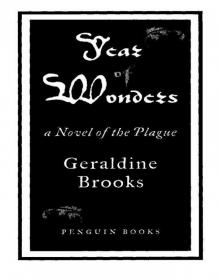 Year of Wonders
Year of Wonders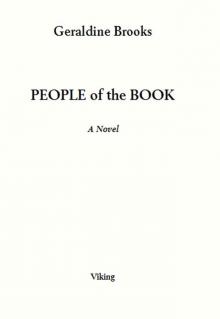 People of the Book
People of the Book The Secret Chord
The Secret Chord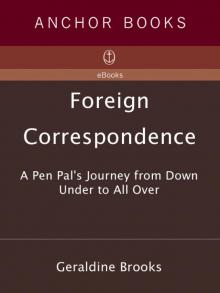 Foreign Correspondence
Foreign Correspondence Nine Parts of Desire (Korean Edition)
Nine Parts of Desire (Korean Edition)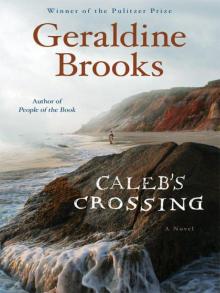 Caleb's Crossing
Caleb's Crossing The Idea of Home
The Idea of Home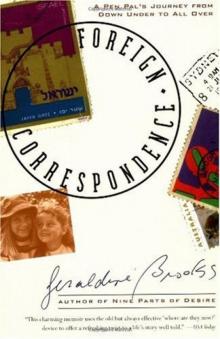 Foreign Correspondence: A Pen Pal's Journey
Foreign Correspondence: A Pen Pal's Journey March
March March: a novel
March: a novel The Best American Short Stories® 2011
The Best American Short Stories® 2011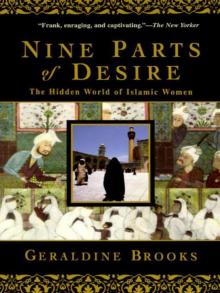 Nine Parts of Desire
Nine Parts of Desire